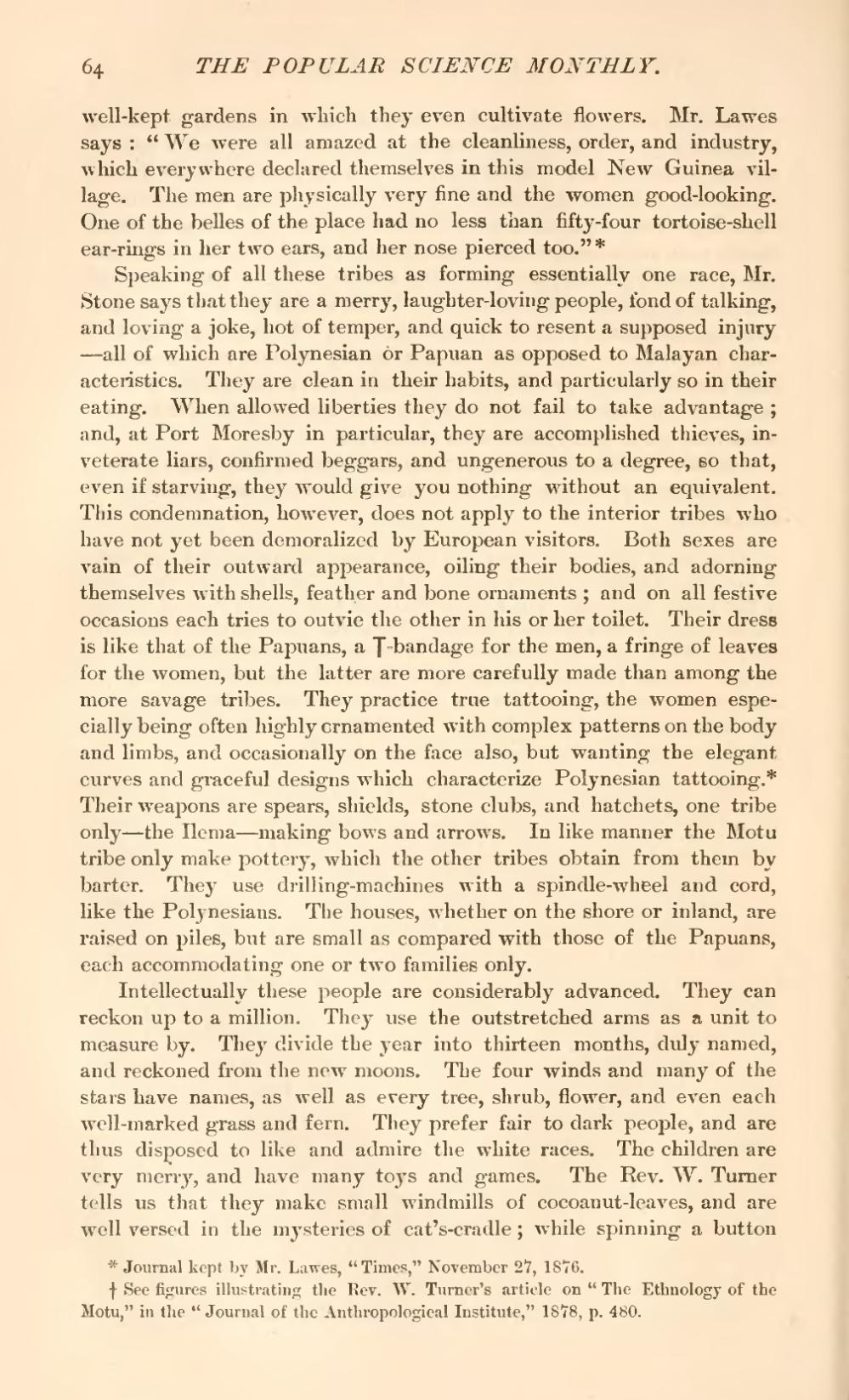well-kept gardens in which they even cultivate flowers. Mr. Lawes says: "We were all amazed at the cleanliness, order, and industry, which everywhere declared themselves in this model New Guinea village. The men are physically very fine and the women good-looking. One of the belles of the place had no less than fifty-four tortoise-shell ear-rings in her two ears, and her nose pierced too."[1]
Speaking of all these tribes as forming essentially one race, Mr. Stone says that they are a merry, laughter-loving people, fond of talking, and loving a joke, hot of temper, and quick to resent a supposed injury—all of which are Polynesian or Papuan as opposed to Malayan characteristics. They are clean in their habits, and particularly so in their eating. When allowed liberties they do not fail to take advantage; and, at Port Moresby in particular, they are accomplished thieves, inveterate liars, confirmed beggars, and ungenerous to a degree, so that, even if starving, they would give you nothing without an equivalent. This condemnation, however, does not apply to the interior tribes who have not yet been demoralized by European visitors. Both sexes are vain of their outward appearance, oiling their bodies, and adorning themselves with shells, feather and bone ornaments; and on all festive occasions each tries to outvie the other in his or her toilet. Their dress is like that of the Papuans, a T-bandage for the men, a fringe of leaves for the women, but the latter are more carefully made than among the more savage tribes. They practice true tattooing, the women especially being often highly ornamented with complex patterns on the body and limbs, and occasionally on the face also, but wanting the elegant curves and graceful designs which characterize Polynesian tattooing.[2] Their weapons are spears, shields, stone clubs, and hatchets, one tribe only—the Ilema—making bows and arrows. In like manner the Motu tribe only make pottery, which the other tribes obtain from them by barter. They use drilling-machines with a spindle-wheel and cord, like the Polynesians. The houses, whether on the shore or inland, are raised on piles, but are small as compared with those of the Papuans, each accommodating one or two families only.
Intellectually these people are considerably advanced. They can reckon up to a million. They use the outstretched arms as a unit to measure by. They divide the year into thirteen months, duly named, and reckoned from the new moons. The four winds and many of the stars have names, as well as every tree, shrub, flower, and even each well-marked grass and fern. They prefer fair to dark people, and are thus disposed to like and admire the white races. The children are very merry, and have many toys and games. The Rev. W. Turner tells us that they make small windmills of cocoanut-leaves, and are well versed in the mysteries of cat's-cradle; while spinning a button
